Step into a fascinating world of stories within leading Singaporean artist Cheong Soo Pieng’s artworks with National Gallery Singapore’s new exhibition Cheong Soo Pieng: Layer by Layer. Opening on 5 April, this free exhibition is Southeast Asia’s first to use in-depth material analysis, through tools such as x-ray scans and infrared photography to reveal fresh insights into Cheong’s artistic processes and innovative use of materials. Layer by Layer breaks down Cheong’s practice for visitors of all ages through an engaging exhibition experience. Through interactive stations that bring the science of studying paintings to life, visitors will gain a deeper understanding of Cheong’s trailblazing practice through discovery, investigation, and play.
Cheong Soo Pieng: Layer by Layer is the first in the Singapore Artist series, comprising four
special solo exhibitions spotlighting Singaporean artists namely Teo Eng Seng, Kim Lim, and Lim Tze Peng at the National Gallery Singapore in 2024. Together they set the stage for the Gallery to build upon its longstanding commitment to Singaporean artists and create new experiences for its visitors while advancing and enriching the appreciation of our local arts and cultural heritage.
Layer by Layer presents over 30 paintings by Cheong from the 1950s to the 1980s. The
exhibition extends across three sections that explore fundamental questions about the
creative process: “What makes a painting?”, “When is a painting complete?”, and “What is
painting?”. Exhibition curator Teo Hui Min collaborated with Dr Diana Tay, conservator and
founder of BARC Labs who provided her expertise on material analysis and worked with
conservators from the Heritage Conservation Centre to conduct the analyses presented in
this unique exhibition. The team also worked with radiographers from the Singapore General Hospital who provided access to the hospital’s equipment for the X-ray scanning of selected artworks.
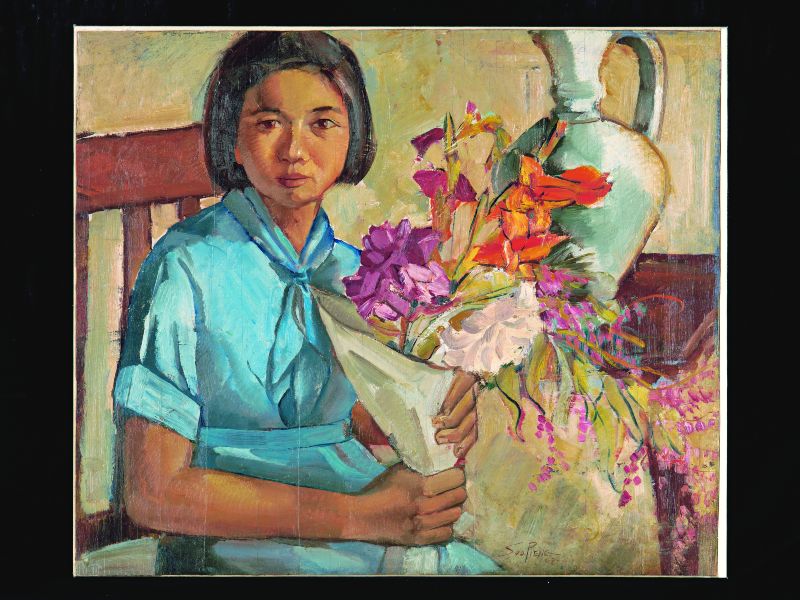

Dr Patrick Flores, Deputy Director at National Gallery Singapore, says, “Cheong Soo Pieng:
Layer by Layer draws the arts and sciences together to uncover the stories hidden within the works and delve deeper into the artistic practice of one of Singapore’s leading artists. As part of the Gallery’s commitment to art education, we hope for the interactive elements in this exhibition to bring to light the unseen process of art creation and conservation and foster art appreciation. We hope that visitors of all ages gain a fresh understanding of Singapore’s modern art and of Cheong as one of the nation’s leading artists, sparking a deeper appreciation for painting and rethinking art histories.”
Cheong Soo Pieng, artist, and innovator
Cheong Soo Pieng boasts a mastery over a wide range of mediums and his work is
underscored by his unwavering spirit of continual innovation and imagination. Exhibiting
widely throughout his life, Cheong worked tirelessly across painting, sculpture, batik, and
printmaking, reworking, and translating favoured motifs across mediums. Even seemingly
conventional paintings like Cheong’s Drying Salted Fish (1978) – featured on the
back of Singapore’s 50-dollar banknote – demonstrate the dynamism inherent in Cheong’s
practice as research uncovered his integration of different types of liquid ink within this iconic painting on silk.
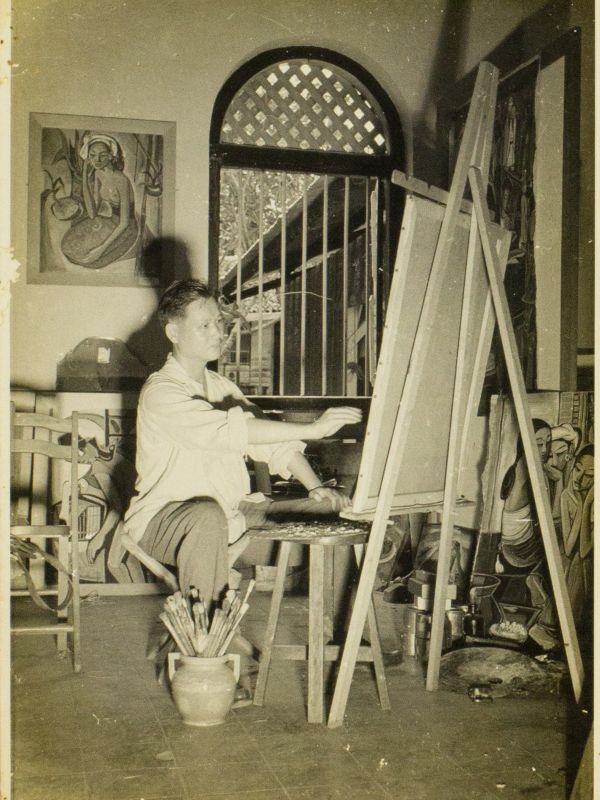
Unveiling the foundations of “What makes a painting?”
Visitors will understand the process behind creating an artwork with the exhibition’s first section, which revolves around the question “What makes a painting?”. Visitors can expect to be treated to an engaging introduction to Cheong’s artistic process through a step-by-step journey from sketching, his choice of materials, to the application of paint.
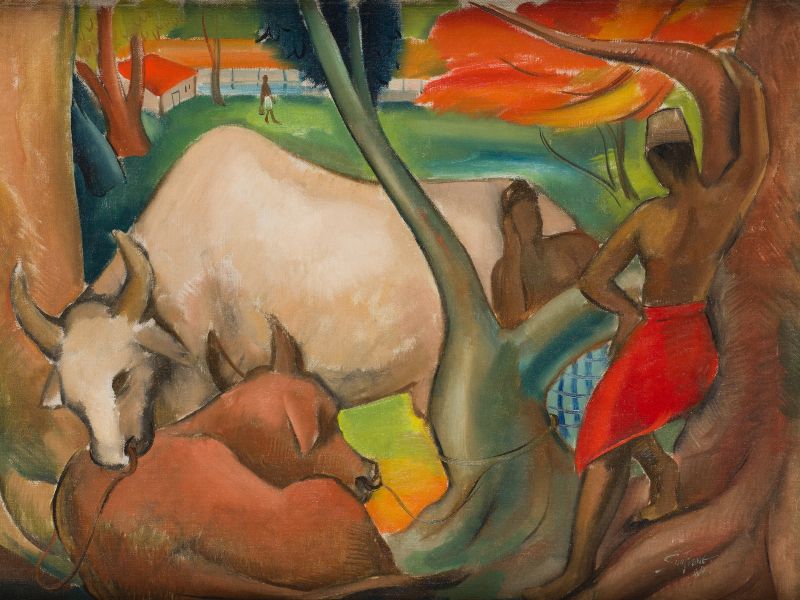
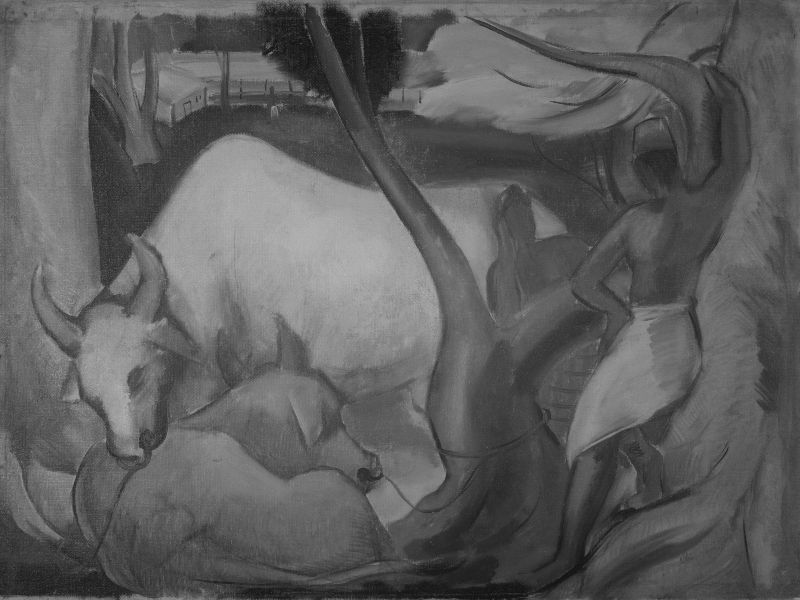
An early work, Indian Men with Two Cows (1949) offers an exciting example of how material analysis uncovered Cheong’s process. Infrared photography revealed Cheong’s confident application of paint without preliminary sketching. This section also highlights Cheong’s approach of layering, known as marouflage. This practice of affixing flexible supports (such as paper or canvas) to another (such as wood hardboard) allowed Cheong to transform finished works into formats that could be more easily stored and framed while enabling him to achieve a wide range of textures and effects in his paintings depending on his choice of support.
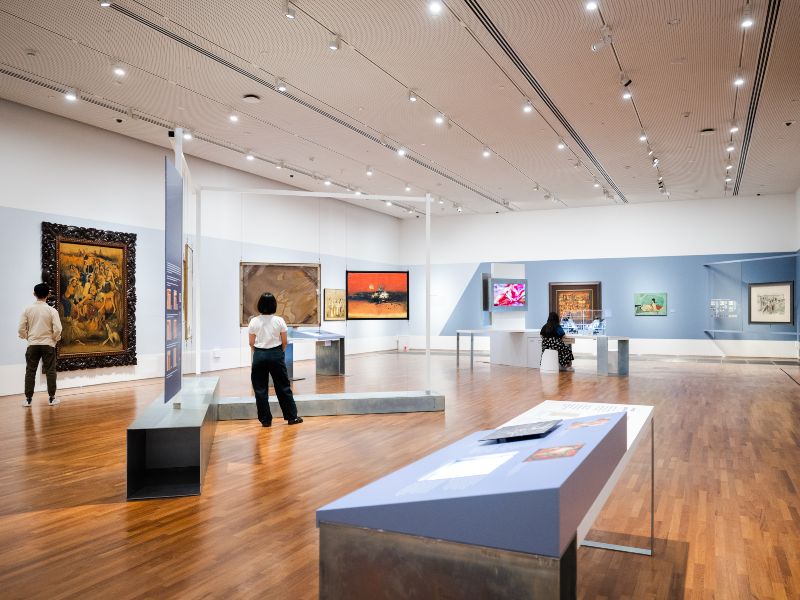
Visitors will also encounter artworks suspended on a freestanding structure, providing a unique opportunity to discover fascinating details on the back of a painting. From a close appreciation of Cheong’s choice of canvas to exhibition labels, the artist’s signature, and clues about an artwork’s past owner, visitors are encouraged to see beyond the painted image.
Questioning “When is a painting complete?”
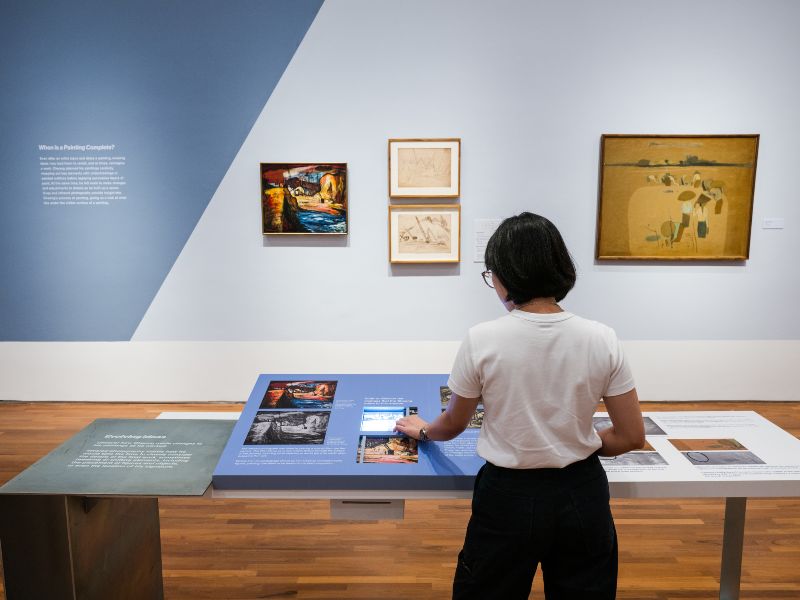
Centering on the question of composition – or how an artist organises elements in an artwork – the next section asks, “When is a painting complete?” Follow the investigative work that curators and conservators undertook to understand how two seemingly different versions of the monumental painting In a Balinese Village were exhibited at different points in time. Cheong reworked the initial version of the painting, which was completed in 1953, a decade later in 1964. Visitors travel back in time to unravel the painting’s journey, tracing archival material complemented by technical tools like infrared photography and x-ray scans.
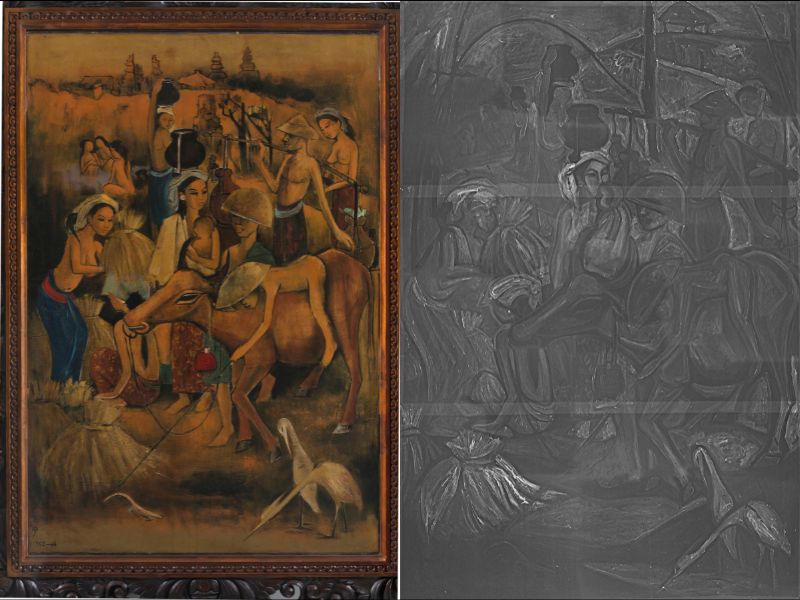
Redefining “What is painting?”

Finally, visitors are invited to consider “What is painting?” in the exhibition’s concluding section. This section focuses on Cheong’s integration of a wide range of materials into his art from the 1960s onwards, including everyday and industrial materials – from metal wires and resin to rattan and straw. Laboratory analysis and close observation allowed for the precise identification of materials in artworks formerly described as “mixed media” such as the copper strips and epoxy resin used in Singapore Scenery (1970). The meticulous process Cheong used to compose this detailed work followed the step-by-step approach of composing his paintings – from the preparation of the wooden support to the outlines made of copper strips, and the infilling of epoxy for the surface of the artwork.
Cheong’s fascinating use of unconventional materials such as jute, gunny sack, and straw is another highlight within this section, demonstrating how his consistent engagement with distinctively Southeast Asian subject matter extended to a desire to overlay various cultural sources within his art. In this way, visitors are invited to expand their conception of painting as a medium, and the notion that a painting is solely limited to the application of colour onto a two-dimensional surface.
Interactive experiences for all

The exhibition includes hands-on experiences that will incite curiosity for all ages. Ranging from opportunities to encounter the different types of materials Cheong incorporated in his art, to microscope stations that will allow visitors to identify the difference between cotton and linen canvases and even explore the shifts in Cheong’s style and material choices over time.

Melding the exhibition’s dual emphases on learning through discovery and play, the Gallery has developed a game available both on-site and online that invites visitors to explore Cheong’s painting techniques while matching cross-sections (a minuscule sample that provides a layered view of a painting’s structure) with paintings featured in the exhibition. Visitors can download exclusive wallpapers that showcase the aesthetic dimension of scientific research while consolidating their learning.
The exhibition also introduces the latest edition of At the Conservator’s Bench | Cheong Soo Pieng: Layer by Layer, delving into an enriching material analysis of the artist’s renowned works. Through conservation science, the video series offers insights into Cheong Soo Pieng’s versatile practice and innovative techniques. Please view the trailer here.





